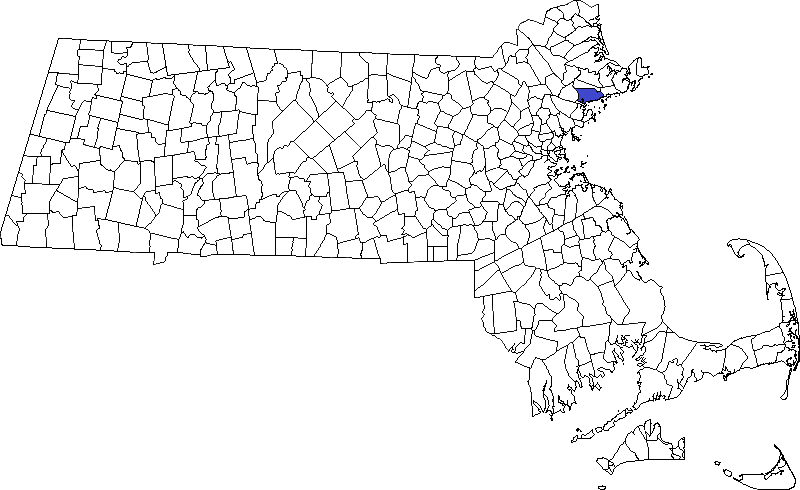
Location: Monument Square, 20 Abbott Street, Beverly
Coordinates: 42°32’52.0″N 70°52’37.8″W
Date dedicated: October 13 and 18, 1882 (see below)
Architect/contractor/sculptor: Hallowell Granite Co., contractor; sculptor unknown
 Both the Boston Daily Advertiser and the Boston Herald reported that the statue was inspired by a popular sculpture by John Rogers. Rogers mass produced small sculptures commonly called “Rogers Groups,” usually reproduced in plaster but sometimes bronze. These small sculptures adorned many a Victorian parlor. One of his most popular was called “Wounded to the Rear” or “One More Shot.” It depicts two wounded soldiers who have been ordered to the rear but one is pausing to load his musket and take one more shot.[1]
Both the Boston Daily Advertiser and the Boston Herald reported that the statue was inspired by a popular sculpture by John Rogers. Rogers mass produced small sculptures commonly called “Rogers Groups,” usually reproduced in plaster but sometimes bronze. These small sculptures adorned many a Victorian parlor. One of his most popular was called “Wounded to the Rear” or “One More Shot.” It depicts two wounded soldiers who have been ordered to the rear but one is pausing to load his musket and take one more shot.[1]

The statue is not an exact copy (for one, the soldier isn’t wounded) but there is clearly a resemblance in the pose–even down to the tilt of his cap. Hallowell had a large staff of sculptors and it is not clear who was responsible for this particular statue. The pose is interesting and unusual. The most common attitude for these memorials was parade rest, indicating that the soldier’s work was done. Yet this soldier is loading for one more shot. The local GAR Post commander, William H. Morgan, modeled for the figure and so this statue is a rare example of a monument being fashioned in the likeness of a local veteran. The same statue was carved for Watertown, Massachusetts and Castine, Maine (and probably other locations) but it appears that Beverly’s was the first iteration.[2]
Sadly, after the formal procession involving numerous civic groups, the dedication exercises were abruptly ended by an accident in which numerous people were seriously injured as a platform gave way. Rev. Joseph F. Lovering, a native of Kingston, chaplain during the war and pastor in Worcester, had just begun his key note address when the accident occurred behind him. This resulted in broken bones and internal injuries–though no fatalities–which one newspaper called a “almost a miracle.”[3] The ceremonies were continued with the formal unveiling five days later on October 18.
[1] Boston Daily Advertiser, October 12, 1882, 5; Boston Herald, October 11, 1882.
[2] The Boston Globe, October 12, 1882, 1.
[3]National Tribune, October 19, 1882, 4.